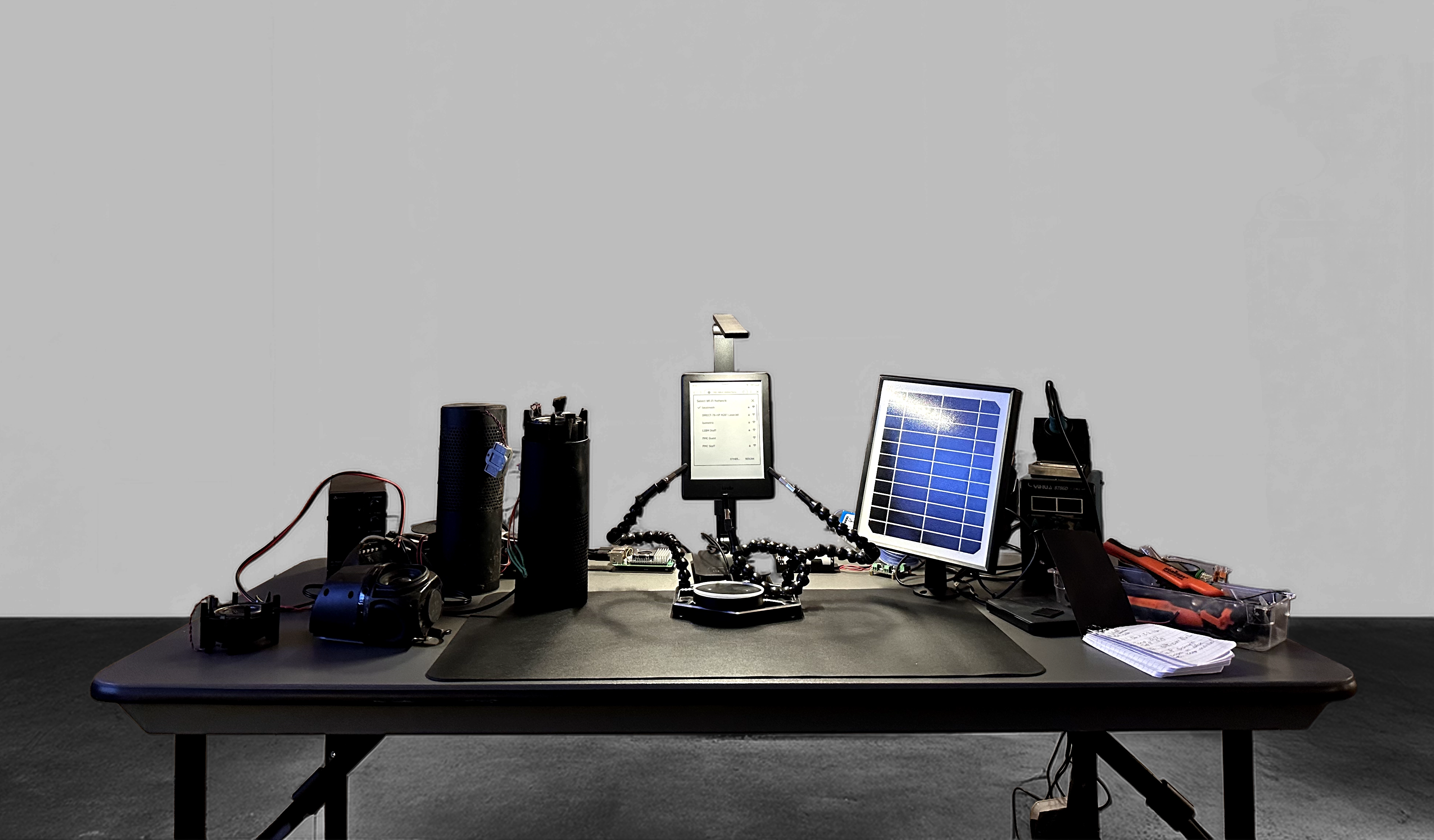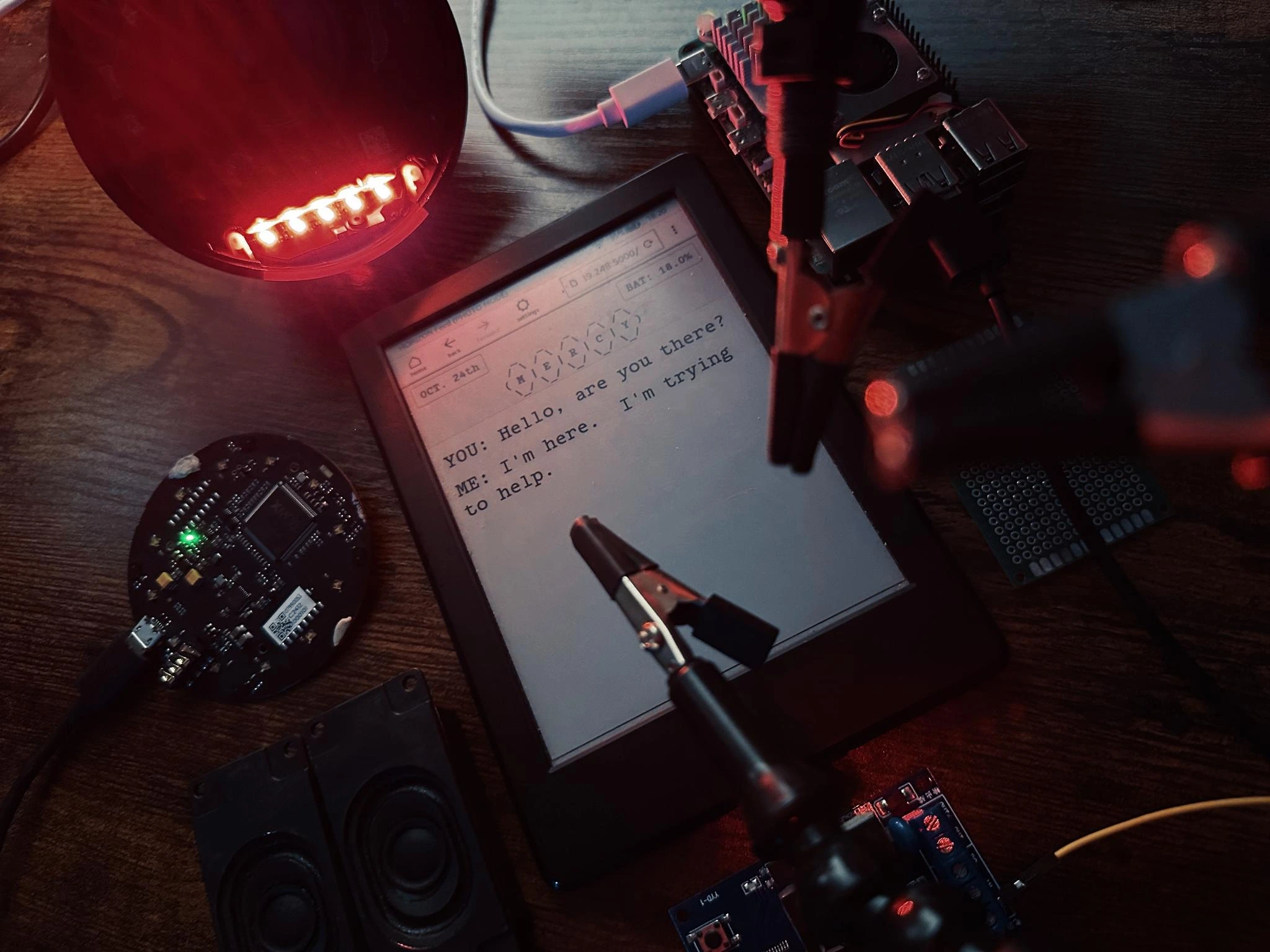The Horizon
2025
Commissioned by: Bridging Responsible AI Divides (BRAID) Programme with funding from the Arts & Humanities Research Council (AHRC).
Exhibitions: Paul Mellon Center for British Art, July 2025.
A glimpse into a possible near-future of post-abundance computation that also shows us how to better use the tools we have today.

The Horizon offers audiences a view into a ‘post-abundance’ near-future.
In this future, climate-related resource shortage, energy cost increases, and infrastructure failures have forced cloud computing to be prioritised to military, government, and industrial applications. The era of constant connectivity is over, and everyday people must adapt to a new reality.
In The Horizon we find a workbench with an unseen protagonist’s desperate attempt at recreating our current era of computational abundance. They have built an entirely local, Cloud-free AI voice assistant using old hard drives, found software, and old tech: a disassembled smart speaker, a hacked Kindle, and an old Raspberry Pi. The system has heavily restricted functions to preserve its solar-powered battery, and to focus on its creator’s specific needs: to help them to adapt to a reality of malfunctioning supply chains where communities must rely upon the land around them to ensure a consistent supply of food. It does this by offering cooking advice, local ingredient substitutions, and foraging ideas for hyper-local self-sufficient meals through its simple voice interface. The assistant has limited information about the world outside, but it can play music and check on a simple automatic irrigation system in the owner’s garden. Buried within its files are the last voice messages that the protagonist ever received before the cloud systems shut down, which detail the experience of one person as they adjust to the new reality, and how it impacts their livelihoods and their intimate relationships.
Through talking with the voice assistant and exploring its functions, audiences get a glimpse into what this future might look and feel like for everyday people, the losses they would endure, and the challenges they would face.
It also demonstrates what a better use of AI can be today, as this installation runs in a low-powered, on-device state with no cloud computing in its operation. It is built from recycled and repurposed components, and its large language model has been refined to function in a non-exploitative, human-centred context: to support labour rather than replace it.
This work features additional voice performance by Aimée Neat.
